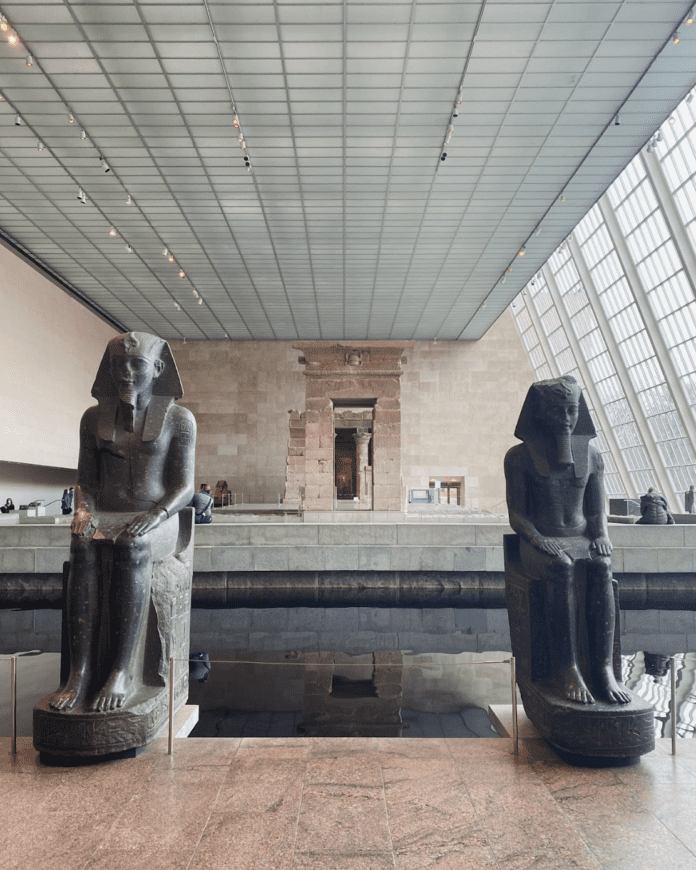In November 2017, the Ouagadougou University in Burkina Faso held a lecture in which France’s president, Emmanuel Macron, said “I am from a generation of French people for whom the crimes of European colonization cannot be disputed and are part of our history.” This speech stated France’s effort to restitute their colonial artifacts, focusing on the claim that African heritage can no longer be the prisoner of European museums.
Up to 90% of Sub-Saharan African art is held outside of Africa, and African nations have opened a passionate dialogue in the past decade to demand the repatriation of their historic artifacts which have fallen into continental hands. As such, museums holding these art pieces – whose origins derive from foreign locations – have created a polemic discussion.
To tackle this controversy, one must understand the two dimensions surrounding this debate: there is a moral dimension, regarding the cultural value of the artifacts for their country of origin, and a practical one, which oversees the financial aspect and the preservation of these items in countries of exhibition. Different groups of people will place different values on each dimension, resulting in a ceaseless dispute of who gets to keep what.
The most sustainable alternative, in the long run, is one that will benefit the globalized museum industry and acknowledge the significance of art for cultural heritage through a compromise between countries where the art is held and the countries of historic origin. If museums commit to a long-term plan to return the items at a reasonable pace and share preservation technology for especially sensitive pieces, a new era of art exhibition can thrive in African nations.
To discover the specifics of this compromise, let us dive into the moral dimension. There is a solid belief that historical items unearthed on the land of other countries remain the property of those countries, despite the bureaucracy or political scene of who controlled the country at that time or found the objects. This is practically a good faith principle that introduces a rather thoughtful concept: artifacts may not have cultural significance to the museums in which they are displayed, and the significance they have may be detached from the places and times they came from. These arguments maintain that repatriating these pieces of art to the respective countries can allow locals to reflect on their culture through history, something that may have been long denied by imperialist tendencies.
Be that as it may, these viewpoints perceive art as a contribution to national heritage rather than human culture in general. This can lead to decisions being made based on national pride rather than the optimal preservation of ancient artifacts, which is why these moral principles must be synthesized with realistic efforts.
With respect to the practical dimension, the repatriation of artifacts from the country of exhibition to the country of origin would require two elements: the first one is a facility with the necessary characteristics to hold these and the second one is a thorough preservation plan to take care of them throughout the years. There is a limited number of facilities worldwide that can devote powerful resources to the adequate preservation of cultural relics; repatriating artifacts without taking this into consideration poses the question of whether the art should be held in a preservation-oriented facility than can maintain them and give them further exposure or in their country of origin, at any cost.
Now, although Europe’s cultural and creative industry accounts for 5.3% of the EU’s GDP and 7.5% of the EU’s employment, the fact remains that restitution enables legitimate owners to reintegrate these objects into their communities, allowing for new cultural relationships to emerge. Macron’s speech at the Ouagadougou University invited European countries to build stronger relationships with African countries based precisely on good faith and mutual understanding of the importance of cultural preservation.
However, returning artifacts is not enough to build these resilient relationships. If museums simply shipped the artifacts to their countries of origin, many of them would be forced to relocate high-maintenance pieces or store them to avoid deterioration. In order to help African countries create an exhibition culture that can nourish their cultural heritage and attract visitors from all around the world, museums must share their technology and infrastructure processes. This is proposed as a temporary measure since the goal is not to make the African cultural industry dependent on foreign practices but rather to have the best interest of art as the driver for repatriation efforts.
Eventually, a wider variety of art hotspots in different countries may emerge as a result of repatriation, creating a more diverse cultural patrimony around the world.
When this debate arises, it is easy to get lost in the middle of national pride and financial benefits, and people quickly become strong-handed, and finding a middle ground becomes difficult. When this happens, we must remember that there are invaluable pieces that transcend national borders and contribute to our human culture, so a conjoint effort to disperse said culture for the sake of art history is essential.
While it is important to acknowledge the significance of art to us humans, collectively, it is also important to realize that it might be more meaningful for some than others. Repatriation efforts should be made in good faith, considering their value to cultural heritage, but also using it as a tool to make the appreciation of art much more globalized rather than centralized in a handful of countries.








